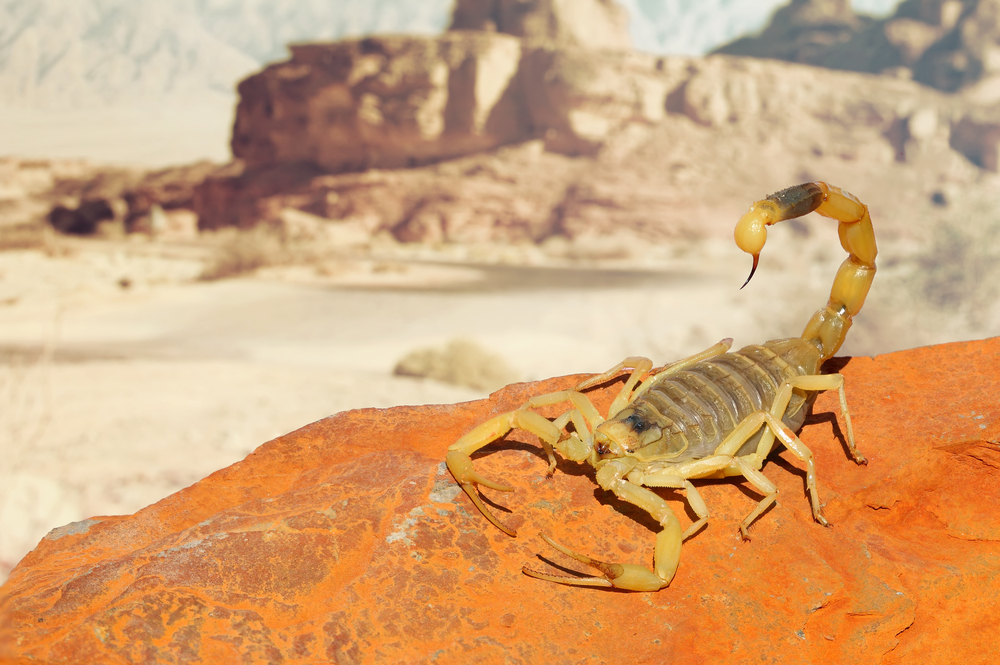The vagaries of science journalism are quite notorious for those in the know. Even a glimmer of a click-worthy topic shoves the whole notion of scientific accuracy right out the door, bringing exaggerations in its stead. Something similar seems to have happened with the deathstalker scorpion.
A search on Google for the “deadliest scorpions” yields multiple results with this little creepy-crawler making the list, or even topping it (Source: Oh-Worm, AmericanOutdoor). While it is the most venomous scorpion in the world, it is not the deadliest (cause of most human fatalities), according to the Guinness World Records. The data on deaths due to scorpion stings with the corresponding species responsible for the envenomation is thin and ambiguous (Source: ResearchGate). To make matters worse, a new subspecies was separated from Leiurus quinquestriatus (deathstalker scorpion) and elevated to its own species, further complicating the data (Source: Euscorpius). In the same article, Guinness World Records states that deathstalker venom is “… the most valuable liquid (by volume) in the world with an estimated cost of $39 million per gallon.”
This same fact has been reproduced in multiple different articles (Source: AspiringYouths, KrishiJagran, YahooNews). However, if one looks at the original source for the number in circulation, “$39 million”, it would become clear that certain nuances had been completely missed and that the association made between the deathstalker scorpion and the source was completely out of context.
The source is actually a statement made by a researcher that referred to scorpion venom in general, as opposed to the deathstalker’s venom in particular: “By volume, scorpion venom is one of the most precious materials in the world. It would cost $39 million to produce a gallon of it.” In fact, the study, in relation to which this statement was made didn’t even involve the deathstalker scorpion or its venom but two other scorpion species altogether. Indeed, an article in the Discover Magazine stated that “Compared to other species, deathstalkers aren’t particularly rare. Easy to maintain and breed in captivity, they happily subsist in tanks and feed on crickets.”

Photo Credit: Discover Magazine
It seems that once the angle was picked up by one publisher, the dissemination of “scientific knowledge” in the public sphere went on as it does, with articles citing other articles, citing other articles, and so and so forth, until the misunderstanding becomes a “well known pop-science fact”.
“The venom of the deadliest scorpion in the world is the most expensive liquid in the world”: this “fact” when paraphrased in many different, much snazzier article titles, with its multiple superlatives and the curiosity it engenders, makes for quite a clickbait. It is, therefore, understandable why this myth may have picked up steam. Another reason may be that articles expounding on the price of the venom and its demand in the medical field were quite possibly gaining traction due to clicks received from people wanting to capitalize on this new and expensive commodity. The whole thing, in fact, seems to have culminated in a small industry, mostly in the Middle East, of people trying to milk scorpion venom and sell it. The money and effort invested, however, has been for naught as there is no real demand for the product. The demand that does exist is fulfilled by professional laboratories instead of amateur operators. It wasn’t long before an entire scam industry sprung around this particular misinformation, especially in Iran, causing financial ruin and ecological disturbance (Source: Observers).
It is also difficult to parse out the exact route and source of contamination in this information stream. Nonetheless, it can be said that these small mistakes do insidious harm to scientific awareness and reduce trust in science publications.
Photo Credit (Featured Image): ABC News